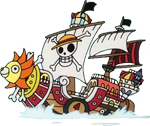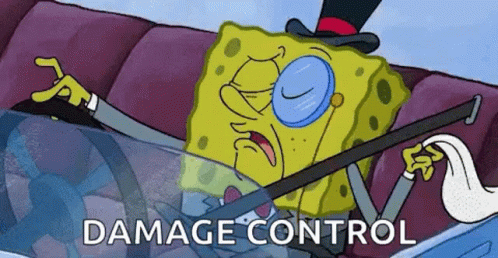@fana:
I get wanting to keep the discussion alive, but any argument about Yamato staying in Wano after this arc reads like trolling nowadays.
Just because you don't like it does not mean it's trolling.
Yamato has been around for over 50 chapters and the only character he's bonding with is Momo. Notonly that, but his DF is a guardian deity of Wano, and we've just learned that zoan fruits have a mind of their own, and it ended up with Yamato despite not being Kaido's plan. To cap it off, Yamato's main role model is still Oden, who fought to death for Wano.
People read too much what was in the first 5 Yamato chapters and completely ignore the actual story that is being told in the 45+ chapters that followed those.
If you want to argue that Yamato will leave but not with Luffy, that would make for a far more interesting way to keep the discussion alive.
I've discarded that option a long time ago. The story is not building up to Yamato leaving with anyone else. He's not forming a crew, he's not bonding with any captain. He's bonding with Oden's son, and his flashback was about admiring samurai and being saved by them.
This is a post I made 8 months ago, and it still holds:
@Deicide:
I think I got a way to explain the confusion in threads like this.
We are trying to assemble a puzzle. The picture, in this case, in some character's (Yamato, Carrot, and so on) intended arc.
However, solving that puzzle isn't easy, because the picture we are trying to form is not known beforehand, and some pieces are missing.
Each week, the author gives us some more pieces of the puzzle, and sometimes he assemble some of those pieces, helping us see a part of the picture.
Our task here is trying to predict the final whole picture before Oda finishes assembling it.
We start with premises, assumptions of what the final image is. Some people take only one premise (like, "this character will join"), others take several premises and, as more pieces are known or assembled, put the results against each premise to see which one seems more likely.
As we try to solve the puzzle, we find small clues: color patterns that appear to belong to the same area of the picture; corner pieces that are easier to assemble, but do not tell much of the picture's center; small groups of pieces that seem to fit together and form small parts of the image.
Based on those, our initial premises are reinforced, weakened or adapted.
We also make small assumptions based on each premise, and try to find pieces that confirm or deny those assumptions. Like: "this part of the picture seems to be a lake", so you try to find more pieces that look like water or a margin. You may find something that confirms it, or only seems to confirm it.
I had three premises originally:
a- Yamato is secretly evil
b- Yamato will join the crew.
c- Yamato will be the captain of his own crew.
It didn't take long for I to discard premise (a). It was clearly wrong.
More recently, I found what appears to be a pattern in some pieces, thus I made a new premise based on that pattern:
d- Yamato will become Wano's guardian.
So, I currently work with three premises that I can't prove or disprove just with the currently assembled pieces. Some posts I make are about one premise, so it can be confusing if one thinks everything I talk about covers the same prediction.
I also made assumptions along the way, like, for instance: "If Yamato is going to join, the fight with Kaido will be a big event, getting center stage and some chapters about it, and will give us at least hints of a flashback". That assumption, so far, has been proved false, so it weakened my conviction in Premise (b). However, the fight is not over, so it can still happen. Even if, in the end, the assumption is indeed false, it doesn't mean Premise (b) is also false, it just weakens it a lot in face of the others.
I feel some people have a single premise, and stick only to the pieces that seem to confirm it, ignoring all other possibilities. However, the pieces they are holding as the most important parts of the final image may actually be small details tossed to the side of full the full picture.
Also, some pieces may be upside-down, so we may looking at them the wrong way…
(a) was clearly wrong.
The story is not building towards (b) or  .
.
But it's clearly making (d) possible.










 He's got nothing on Rayleigh- literally the vice captain of his crew. Zoro is officially the combatant and Sanji the cook so you can't really say Zoro is above Sanji, but Rayleigh as the vice captain would be second only to Roger.
He's got nothing on Rayleigh- literally the vice captain of his crew. Zoro is officially the combatant and Sanji the cook so you can't really say Zoro is above Sanji, but Rayleigh as the vice captain would be second only to Roger. 











 .
.